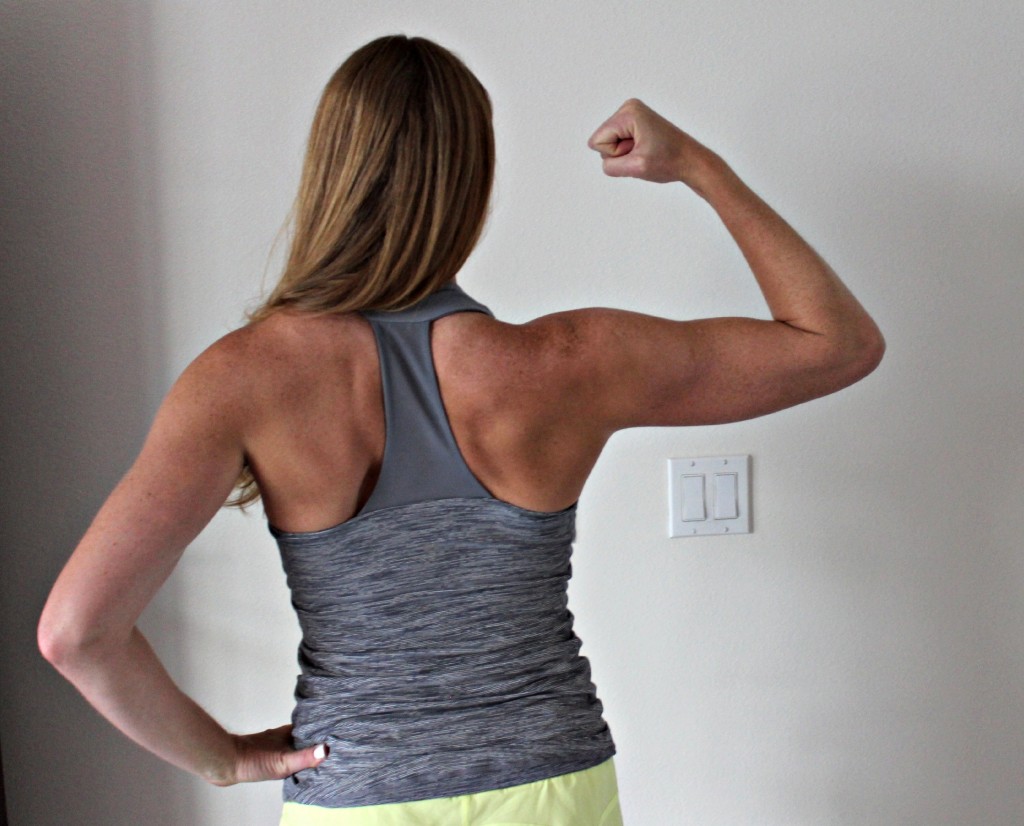Some thoughts and discussions from me.
Whether it’s a new client, new online program, or a new phase, I’m always ready for it.
It’s coming – every day in week one, and then a couple more in week two.
I’m so sore!
My glutes are on fire!
My triceps are so sore!
That new-program muscle soreness. Surprisingly, most of my clients actually love it! And while it’s never my intention to make ANY of my clients so sore that they can’t sit down on the toilet (seriously, that shit’s just not necessary – no pun intended) they certainly do have muscle soreness in a couple new places after every strength workout for the first week or two.
However, after those first couple of weeks, the muscle soreness isn’t quite as frequent. It starts to dissipate, and is less of a “multi-muscle group” soreness and more of a “here and there” soreness.
Why is this? It’s not because you’re not working hard enough, and it’s not because the workouts aren’t effective. In these first couple of weeks, your body is making some serious adaptations which also brings on serious soreness.
Why Am I Not Sore After Every Workout Anymore?
[Tweet “Why Am I Not Sore After Every Workout Anymore?”]
Just because there’s no soreness after a workout does not mean that the workout wasn’t effective. To build lean muscle, you need to stimulate the muscle tissue – which doesn’t always result in muscle soreness. In that first week, your body is making adaptations to prepare itself to do that movement with that load again. Therefore, the next time you perform that same movement with the same load, you won’t be (as) sore.
Scientists are actually still not 100% sure what causes muscle soreness, but the leading theory it’s produced by tiny microscopic tears in the muscle tissue during the eccentric contraction.
That said, you’ll likely have minor muscle soreness after most of your strength workouts – it just won’t be as noticeable as that first week of a new program. Because with each start of a new program, you’re likely making some bigger changes – with exercise selection, rep range, tempo, etc.
Factors in a workout that will generally produce muscle soreness are:
- load (increases in weight)
- exercise selection
- range of motion (a higher step up, a deeper squat, etc.)
- rep range
- volume
- tempo
Basically, any way to progress a workout could lead to muscle soreness. But let’s talk about tempo for a second. Every once in a while, my inner sadist comes out and wants to do a workout that will leave me sore the next day. To do this, I manipulate the tempo via increasing the time under tension during the eccentric contraction. Basically, depending on prior training and current programming, I’ll slow down the eccentric (lengthening) portion of the movement. A couple of my favorites are the pause squat and the eccentric inverted row (really slow down the lengthening of the arms in the row.)
However, in general, I’m not a huge fan of major muscle soreness. I’m an active gal, and if a squat session leaves my legs feeling sore and stiff the next day, that means my volleyball or ski game is compromised. And I’m all about utilizing training as a way to increase my performance in LIFE. Some studies say that consuming a post-workout meal of protein and carbs (something I’m a fan of) within 60 minutes of your workout will help to decrease muscle soreness – as well as foam rolling.
[Tweet “Why Am I Not Sore After Every Workout Anymore? – via @TrainerPaige”]
Muscle soreness: love it or hate it?




i always wonder about this, it is something that it now takes a lot more to feel sore although i will feel so exhausted after a workout. it is a mental game because in reality i know i worked hard but my body has had this amazing ability to adapt. great post! so relevant this time of year when it is all about the workouts around the holidays. love this take.
Great post. It goes against the “No pain, no gain” mentality that I despise so much! I find that when I fuel well after a run, I recover well and am not sore : )
Jenn@Mark My Miles recently posted…I didn’t always know that I wanted to be a mom or even a wife.
I was just telling the husband the other night that I’m never sore after teaching my classes during the week anymore! I am like you, in that every now and again, I want a workout that will leave me sore. It’s that ‘good’ sore feeling, you know, like I really challenged my body and worked my muscles.
Jen recently posted…HEALTHY LUNCH RECIPES
Ugh, I dislike being painfully sore after a workout, but I have found that a protein shake with essential amino acids (BCAA’s) can shave off a day off soreness.
Monica.
MonicaP recently posted…Athleisure OOTD